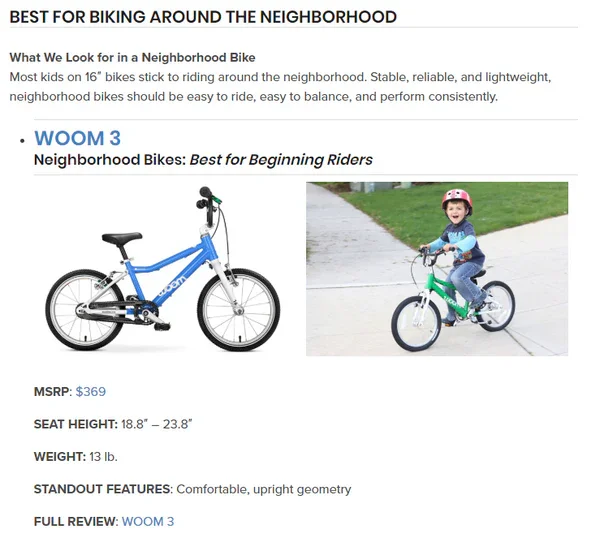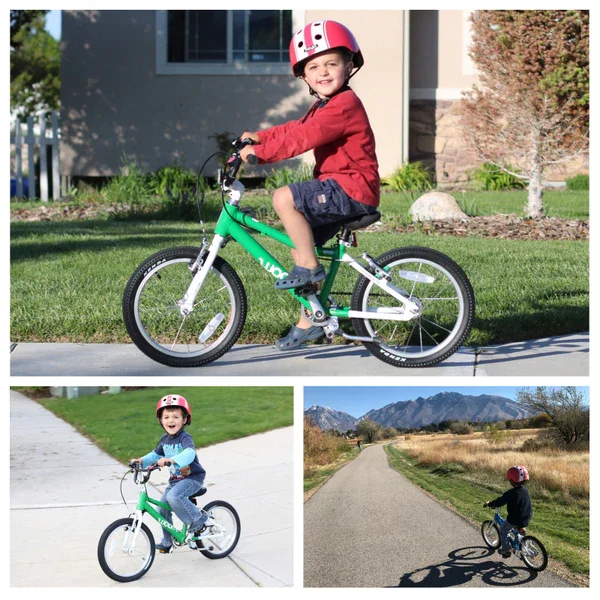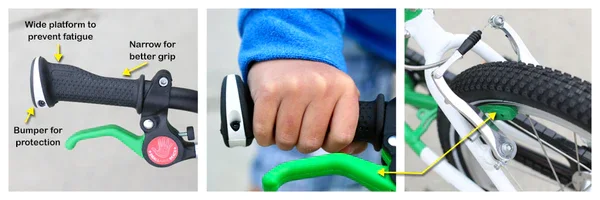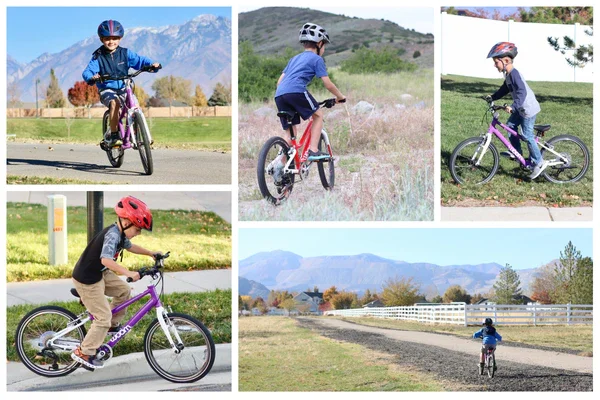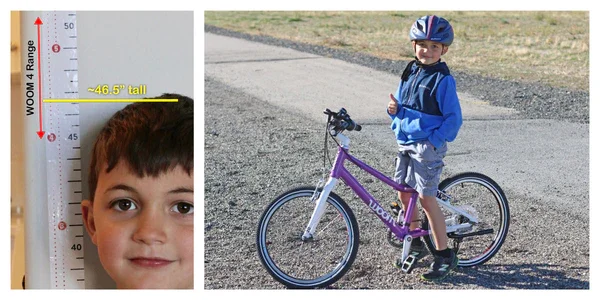Interview with Natalie from TwoWheelingTots (Part 1 of 2)
Interviewing TwoWheelingTots (Part 1 of 2)
In 2009, Natalie Martins began researching bike options when her oldest child was 2 years old. The popularity of a review she wrote on balance bikes inspired her to create a website in late 2010 entirely dedicated to reviewing kids’ bikes: TwoWheelingTots was born.
For the past nine years, TwoWheelingTots has grown alongside Natalie’s three bike-loving children—the site has posted reviews of more than 60 balance bikes and 70 pedal bikes, as well as over 70 reviews for related accessories like helmets, bike trailers, and child bike seats. Natalie, currently living in Salt Lake City, Utah, added Fort Worth-based mom and marketing guru Carrie Wren to the TwoWheelingTots team in 2016. During busy times of year, the site now averages 105,000 visitors per month.
Pictured below: Serving as a research hub, here is a preview of the in-depth details TwoWheelingTots provides.
For parents looking for information on kids’ bikes, TwoWheelingTots serves as research hub, authority, and community forum all rolled into one.
Recognizing Natalie Martins as an expert in our field, woom sat down to pick her brain about everything-kids-on-two-wheels.
The following interview is part 1 of the series; read part 2 for Natalie’s insights on balance bikes.
Why did you feel a site dedicated to kids’ bike reviews was needed? You’re a mountain biking enthusiast and a mom. Obviously those qualities bring important perspective and experience to your reviews, but in what other ways has your background contributed to TwoWheelingTots’ approach?
I taught middle school science for five years, so I enjoy the analytical part of getting the data—what does the data say? How much does the bike weigh? What’s the actual seat height? When I created TwoWheelingTots, information like that wasn’t available online or wasn’t readily accessible, and so I just did the dirty work. I used to call bike shops and say, “hey, weigh this bike for me,” or I would go around town and do the measurements myself, and that’s what I would publish in my reviews. I would explain from the analytical side why it was a good bike, not just that my kid liked it.
Why do you think this type of research is important—or essential, even—in the choice of a kid’s bike?
Bike manufacturers often don’t readily display the weight of their bikes. I can see their point of view, in some ways—for instance, components can change when bike shops put them together. But with kids’ bikes, the weight is very crucial. When you look at the comparison as a percentage of the rider’s weight, 5 pounds difference or even 2 pounds difference for a kid is a much bigger percentage than an adult. That’s why I started pushing that and weighed them myself.
When woom came on board in 2014, they understood. They said, “Here’s the weight of our bikes, here’s the seat height.” It was very clear from the get-go. And so now we’ve had more companies join in.
What are your main recommendations for parents?
You start with balance bikes. And if it’s someone whose child is just starting out, I usually recommend not to buy a tricycle, scooter, or bike with training wheels. All of these slow a kid down in terms of learning. It’s easier to ride a scooter than a balance bike. If a toddler has an option between a balance bike and a scooter, they’re going to choose a scooter, but they can do more on the balance bike once they learn to master it.
From there, at any age, I stress the importance of getting a good bike. Far too often, when you watch a parent try to teach a kid to ride a bike who’s been on training wheels or even without, parents get frustrated at the child. But that frustration should usually be directed at the bike, especially when it’s a bike from a discount store. Those bikes are heavy, and they usually have a very short wheelbase, so the child is sitting very high on the bike. At low speed, it’s really hard to ride anything that is high-centered. To teach a child to ride a bike you need to give them the right tools to succeed.
What does that bike—a bike that would help them succeed—look like?
It’s a bike that is lightweight, that is actually designed for kids. If you give a kid the proper tools and get them a bike that’s narrow, that fits under their frame…that’s ideal. I always really appreciate woom’s approach, especially with the woom 2 and woom 3, which are typically the first pedal bikes for kids. These bikes are designed so that kids can sit more upright and so that their weight is centered on their hips.
If their weight is centered on their hips, it’s the natural center of balance they’re used to, because when you walk your weight essentially centers on your body. This is why when it comes to learning to ride a bike, woom bikes are a hands-down favorite on the site. The bikes have that unique combination: this is what a child needs to be able to ride a bike, and this bike has it…it’s lightweight, it’s narrow, it’s upright, their weight is centered on their hips, and they’re able to start pedaling efficiently form the beginning. And they feel more comfortable on it.
When my youngest child was five, I went into a bike shop and just said, “Hey, do you have a bike for him?” My experience wasn’t positive. For me, already knowing what to look for, it was easy to try him on bikes and see what fit him and what didn’t…but most bike shops, they know everything about adult bikes, the ins and outs, and they’re amazing at it, but they don’t necessarily realize that kids bikes aren’t just shrunken-down adult bikes. Kids’ bikes should be designed for kids. Most major bike brands design kids’ bikes when their designers are done and have extra time because they’ve finished out their adult models. They’re not necessarily the best.
You’ve said that one of TwoWheelingTots’ principal goals is to educate parents about their options. When parents first start looking at bikes for their child, what do you think they’re looking for? Are they looking for the right things?
I think a lot of parents look at the price tag first, which for some parents is completely understandable. If you can only afford a budget bike, then let’s find a budget bike that works for you. But some parents don’t necessarily understand the $200 or $300 difference, they don’t understand this concept that these less-expensive bikes are hard to ride, that they’re not helping their child… For those parents, once that’s explained, then it’s not a problem for them to invest more.
Sometimes consumers also look for that “cuteness” factor—what cartoon character is on the bike, or streamers, all that excess stuff. I think for the parent who comes to our site and understands the concepts we emphasize, they look instead for quality and consider the bike more of a tool than a toy.
What’s the most frequently asked question you get on your site?
“What bike will fit my child?” Fitting a child’s bike is absolutely the trickiest part. To me that shows how the bike industry of itself has made it kind of tricky because they don’t give seat heights. They just give the tire size, and the tire size isn’t indicative of the size of the bike, per se. For example, there are many 16" bikes that have a higher minimum seat height than 20" bikes. So it’s very fluid between the sizes…parents kind of get lost.
What’s your answer to the “What bike will fit my child?”question? How do parents find the right size?
Usually I always ask them what the child’s inseam is. It’s very common to go with height, but we’ve found inseam to be better. Recently we had a reader say a bike company had recommended a 24", but the reader thought it might be too big. I asked about the child’s inseam, and it ended up that the minimum seat height on the 24" bike was 5 inches higher than the inseam of the child. That’s way too big. Here’s a child who had a longer torso and shorter legs… He wouldn’t be able to touch the ground, but yet he was tall enough. He was recommended the wrong size bike.
On all of our charts we always include seat height because that’s what you need to figure it out, but it’s still tricky and depends on the rider.
Pictured below: TwoWheelingTots' sizing recommendations are second to none.
If it’s your child’s first pedal bike, their feet should be flat on the ground because kids need to be able to stop with their feet. If it’s their second pedal bike, they can be on their tiptoes.
You’ve talked about some of our bikes in the course of the interview—what’s your opinion of woom as a company?
One thing that I’ve always appreciated about woom is the company’s amazing customer service. It’s hard to recommend a company and have a reader come back and say they’ve had a bad experience. I’ve never had that issue with woom. woom is good at keeping me up to date with changes to their product line. I also appreciate the message that the brand itself gives. It’s very positive, very uplifting…”bikes are fun, let’s help build this bike generation.” And woom is very community-oriented. They say, “Here’s what we found, here’s our research, let’s help everyone get out on bikes.”
They’re also just good, nice people, and I always appreciate that. You have that built trust in knowing that you’re working with good people and you’re sending your readers to good people who have a good product and who stand behind that product.
At woom bikes USA, we offer lightweight, high-quality woom bikes for children of all ages, starting at one and half and going up to 14-year-olds. View all of our bikes and accessories here.
